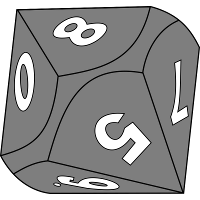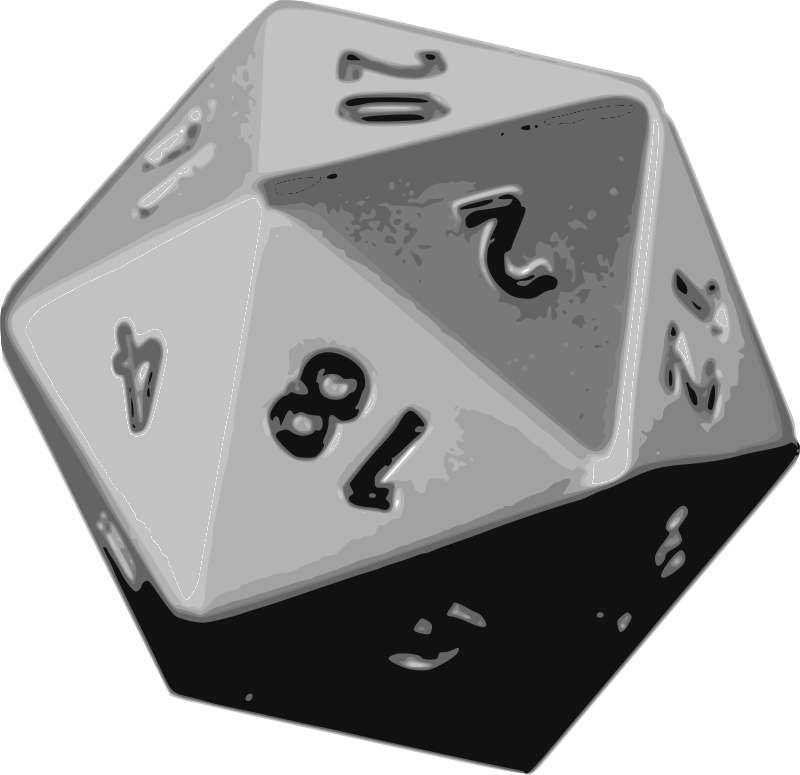Role-Play Basics
Role-playing is a form of art. Successful role-playing depends on a number of factors. Unlike conventional games that follow a strict set of rules, role-playing games do not. Instead, a referee, called the game master, or GM for short, runs the game, decide when rules apply, and when to disregard these rules.
However, there is one strict rule that every game master must follow to be successful -- the players and the game master must have fun with the game. The players can help by cooperating with the GM. Disputes can ruin even the best adventure.
This section will show you the basics of role-play; ideas, pitfalls, and styles of role-play. Still, success will depend on the way the game master runs the game, and the way the players play it. Do not take that these as rules to success. You will be able to create your own styles that are successful to running your games or playing other GM's games.
The information may be overwhelming at first. But go on and play/run a few games. Do not worry about the mistakes you make. Then refer back to this section again later to improve your games. One of the best ways to learn role-playing is by playing and running games.
Dice
Dice are very common gaming equipment. They are used in a large portion of the games in this world.
Originally, the only kind of dice available are the six-sided dice which looks like a cube. Once role-playing games became popular, six-sided dice became inadequate to meet the need of every situation. The result is a variety of dice with different number of sides. These include four-sided, six-sided, eight-sided, twelve-sided, twenty-sided, thirty-sided, and one hundred-sided dice. You can find these dice at the local hobby shops. Or purchase them online.


With recent innovation in technology, programmable hand-held calculators, personal data assistants (PDA), cellphones, notebook computers and the Internet, we are able to produce a set of electronic dice with arbitrary number of sides. We call it Cyno's Dice. It is available for a variety of distinct systems.
Notation
Most role-playing games use a standard notation for dices. Cyno's Role-Play does too. The standard notations for dice are as follow: amount of dice, followed by a letter 'D' (upper or lower-case ok), followed by the number of faces on a die. So for a four-sided die, the notation is D4 (1D4, you may omit the 1), The notation of a six-sided die is D6, 2 eight-sided dice is 2D8, and so on (pretty simple, huh?). To find the result for 2 eight-sided dice (2D8), roll 2 eight-sided dice and sum up the results. If you do not have two dice, roll the same die twice.
Now, here is a more complicated notation. Do you know what 4D6 - 3 stand for? It means that you need to roll 4 six-sided dice, sum them, and subtract 3 from the result. This notation applies for other mathematical operators--plus, multiply, and divide--as well.
Another notation, not often used, is D%. It means to roll a percentage die, or a one hundred-sided die. If you don't have access to such a die, you can use 2 ten-sided dice. The first number you rolled is the first digit of the percentage, and the second number is the percentage's second digit. So, if you roll an 8 the first time and roll a 4 on the second time, then it is 84 percent.
Running the Game
As with other games, players take turns. In role-playing games, turns are called moves. To start off the game, the GM has to describe the situation, or story, to the players. Players will then be able to respond to the situation.
The more descriptive the situation is, the more understanding the players will be of their whereabouts. However, unnecessary information will slow down the game. Once the GM have described the situation, he will then take questions, answer them, and proceed to get the moves from the players. Another advantage to be descriptive is that the GM and players can spend less time asking questions and answering them.
The players need to respond to the situation in a clear and concise manner to reduce confusion and mistakes. Players' moves should be as descriptive as possible, for the GM will create the next situation based on these moves. For example, if the move is too vague, such as, "I will punch the villain." The GM may think the player is going to punch the villain in the stomach rather than the left eye, as intended by the player.
The game will proceed in situation-move-situation fashion.


